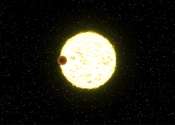Kepler telescope delivers new planetary discovery from the grave
A new study by an international team of astrophysicists, led by the Jodrell Bank Center for Astrophysics has presented the amazing new discovery of a near-identical twin of Jupiter orbiting a star at a colossal distance of ...









